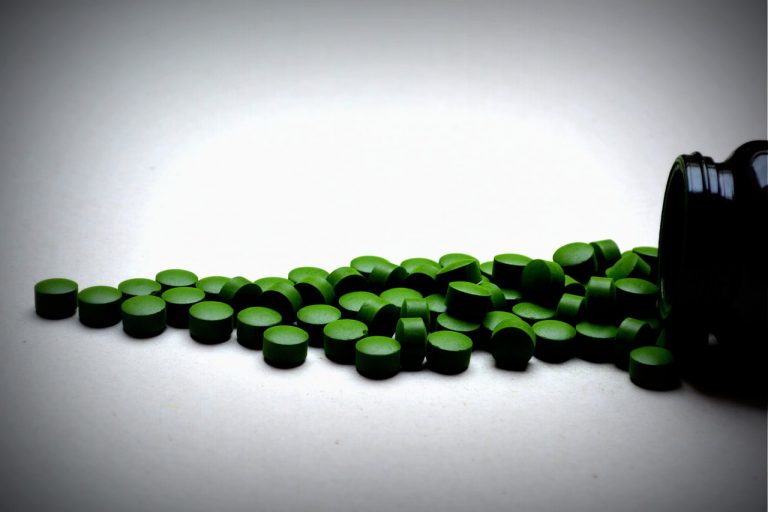Chlorella is a type of single-celled aquatic organisms that have relatively recently gained the status of "superfoods", partly due to the total amino acid profile and high content of omega-3 fatty acids DHA and EPA. It has also been reported that it lowers blood pressure in humans, lowers serum cholesterol, increases immunity, and even fights cancer.
According to currently prevailing trends, we should add chlorella everywhere - to the morning shake, afternoon salad and evening snack. It aims to provide health, youth, outstanding sports results and a multitude of other benefits. But is it really so?
It seems that chlorella fully deserves its good reputation and superfood status. However, it should be remembered that although chlorella as an organism has existed for billions of years, it could not constitute a significant part of the human diet for obvious reasons. Therefore, it should be considered as food from the industrial (or modern) era and for this reason should be treated with some precaution. We have only recently understood the chemistry of chlorella in the human body. In an article from 2002, Armstrong et al. [1] discovered lipopolysaccharide (LPS) in the chlorella cell wall. LPS is an endotoxin found on the surface of all Gram-negative bacteria such as E. coli or Salmonella and is a strong activator of the immune system. When LPS binds to receptors on the surface of macrophages (phagocytic cells of the innate immune system), it activates and induces them to release proinflammatory cytokines IL-1β, tumor necrosis factor TNFa and nuclear factor-kappa B (NF-κB) [2]. Chlorella, in effect, stimulates our innate immunity through LPS, an endotoxin that occurs in some deadly bacteria. Too much LPS leads to sepsis, which, for obvious reasons, we should avoid, but even low doses of chlorella may give undesirable symptoms. Although a stimulated, active immune system may be beneficial in situations such as an epidemic of an infectious disease, you should ask what happens to us when chlorella is a regular part of the diet. Chronic exposure to LPS leads to chronic systemic inflammation, which is definitely not healthy for our body. In particular, macrophages activated by LPS in the brain are involved in the progressive degeneration of dopaminergic neurons and are responsible for Parkinson's disease [3].
But wait, it's not all!
Is chlorella not accidentally at the bottom of the water chain? Some unfortunate organisms must eat it, so why can not we? It turns out that animals that eat algae, such as crab or shrimp, have developed a mechanism, a unique protein that binds and neutralizes LPS. We humans did not develop such defense mechanisms. In the case of chlorella, we see another manifestation of a well-known evolutionary history. Birds eat grain and people eat birds. People, unlike birds, do not do well when they eat raw grains. It's the same with chlorella. For shrimps it can be an excellent source of food, but for people (who eat shrimps) not necessarily.
If this was not enough to dissuade you from using chlorella as an ingredient in every meal, there is also the risk of getting infected with viruses. And this is a huge risk [4]. Typically, the virus contains genetic information about a handful of viral proteins. Chlorella viruses have more than three hundred genes, most of which code for proteins of unknown function. The potential of harmful interactions of these proteins with the normal functioning of human cells is real. If the story of another fallen superfood, aka Klamath Lake cyanobacteria, is any warning, then in the future we expect a repeat of the Chlorella virus entertainment. As the use of chlorella in foods increases under pressure from industrial manufacturers and distributors, the likelihood of being infected by the virus also increases. It would be good if we stick to the tested super products with a full amino acid profile and high content of DHA and EPA - fish and oil obtained from them.
People who for whatever reason refuse to take DHA and EPA from animal sources will do the right thing if they supplement their diet with the omega-3 fatty acids from chlorella instead of eating all the chlorella. It is assumed that extracts from chlorella are free of LPS and other toxic substances.
References:
[1] Armstrong PB, Armstrong MT, Pardy RL, Child A, Wainwright N., Immunohistochemical demonstration of a lipopolysaccharide in the cell wall of a eukaryote, the green alga, Chlorella, Biol Bull. 2002 Oct;203(2):203-4.
[2] Hsu HY, Jeyashoke N, Yeh CH, Song YJ, Hua KF, Chao LK, Immunostimulatory bioactivity of algal polysaccharides from Chlorella pyrenoidosa activates macrophages via Toll-like receptor 4, J Agric Food Chem. 2010 Jan 27;58(2):927-36.
[3] Qin L, Wu X, Block ML, Liu Y, Breese GR, Hong JS, Knapp DJ, Crews FT, Systemic LPS causes chronic neuroinflammation and progressive neurodegeneration, Glia. 2007 Apr 1;55(5):453-62.
[4] Van Etten JL, Unusual life style of giant chlorella viruses, Annu Rev Genet. 2003;37:153-95.






